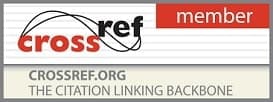2018, Vol. 1, Issue 1, Part A
A clinical study of acute kidney injury in high risk neonates
Author(s)
Dr. MD Safiuddin Hasan and Dr. Ankur Agarwal
Dr. MD Safiuddin Hasan and Dr. Ankur Agarwal
Abstract
Introduction: Acute kidney injury (AKI) is a common occurrence in the neonatal intensive care unit (NICU). In recent years, our knowledge of the incidence and impact of neonatal AKI on outcomes has expanded exponentially. Currently, the diagnosis of AKI is solely made by rise in serum creatinine or decrease in urine output. Unfortunately, serum creatinine is considered as a suboptimal biomarker as it is a marker of kidney function, not damage or injury; thus, rise in serum creatinine is observed after 48–72 h of insult. By the time serum creatinine is raised, a significant amount of function has already been lost.
Objective of the study
1.To estimate the proportion of Acute Kidney Injury in high-risk neonates.
2.To study the risk factors and outcome of acute kidney injury in these neonates.
Material and Methods: This is a prospective observational cohort of 200 high risk neonates admitted in NICU, SIMS, Hyderabad over a period of 2 years. All high-risk neonates with 2 or more serum creatinine values were included in this study and neonates with death within 48 hours after birth, less than 1 day of measured urine output (UOP) on days 2 to 7 after birth, and fewer than 2 Serum Creatinine measurement were excluded.
Results: Among the 200 neonates enrolled, the occurrence of AKI was 30% (60/200 patients): 56 neonates fulfilled the modified neonatal KDIGO definition of AKI according to the Serum Creatinine criteria, 31 neonates fulfilled the modified neonatal KDIGO definition of AKI according to the UOP criteria, and 28 neonates fulfilled both the Serum creatinine and UOP criteria of the modified neonatal KDIGO definition of AKI. This resulted in a total of 60neonates with AKI. When classified according to the neonatal modified KDIGO stages: 28 (56%), 22 (44%) and 10 (20%) neonates fulfilled the criteria of AKI stage 1, 2, and 3, respectively. There were 3 deaths (5.36%) and 3 were discharged against medical advice (5.36%). The remaining 94.64% were discharged well.
Conclusion: AKI is a life threatening condition with still high mortality rate. Early recognition of the risk factors and the rapid effective treatment of the contributing conditions will reduce AKI in the neonatal period.
Pages: 32-39 | Views: 604 | Downloads: 292

How to cite this article:
Dr. MD Safiuddin Hasan, Dr. Ankur Agarwal. A clinical study of acute kidney injury in high risk neonates. Int J Paediatrics Geriatrics 2018;1(1):32-39. DOI: 10.33545/26643685.2018.v1.i1a.171






